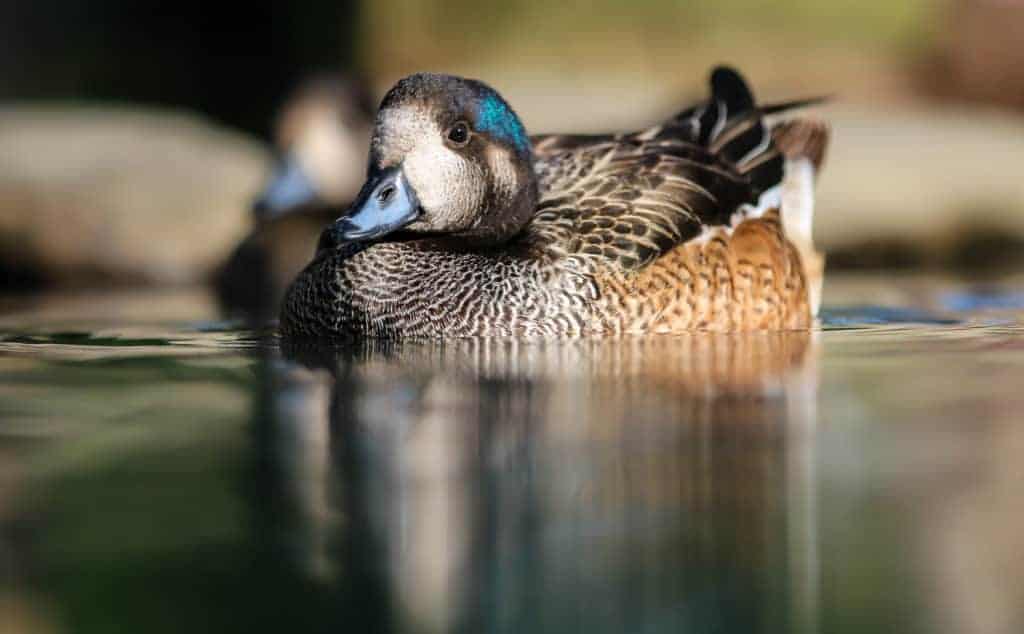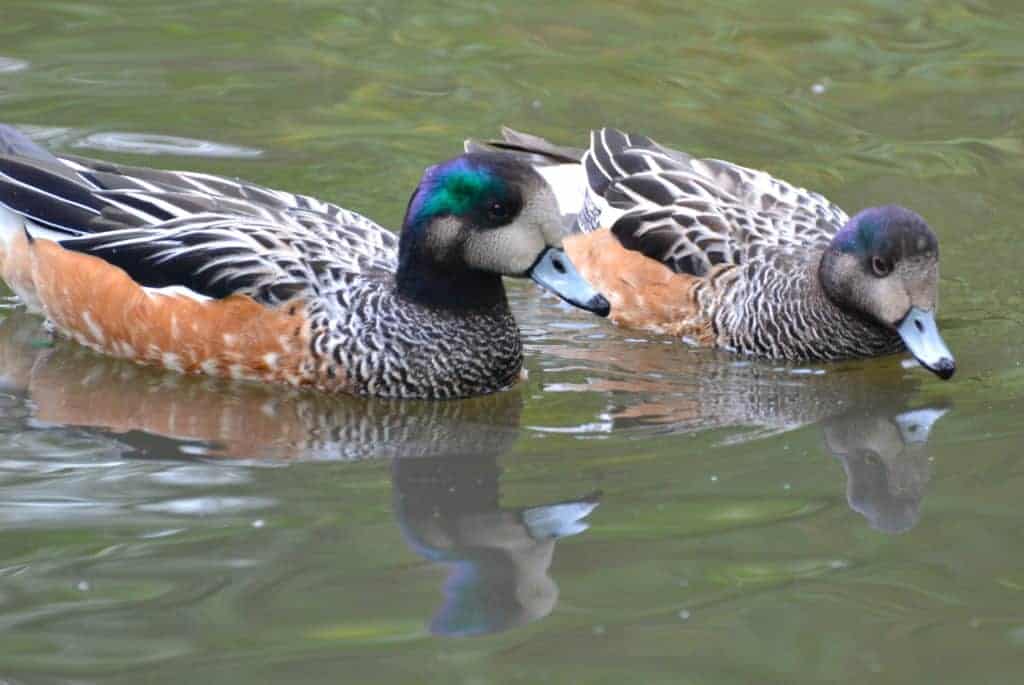Chiloé Wigeon

The distribution of the Chiloé Wigeon is South America, from Southern Brazil, Uruguay, Paraguay, northern Argentina and central Chile to Tierra del Fuego and the Falkland Islands. It is a fresh water bird, frequenting lakes and marshes, preferring open waters.

Mareca sibilatrix
The Chiloé Wigeon is a very popular bird in collections of wildfowl. In common with most southern hemisphere ducks, the plumage is similar in both sexes and it stays in colour year-round. It is undemanding and relatively peaceable, with a melodious three-syllable whistle. The scientific name, sibilatrix, derives from Latin, sibilare — to whistle.
The display and voice of the Chiloé Wigeon have their peculiarities. Both sexes lift the chin and call in the same way. The whistle of the male is often used as a call note and the birds are somewhat fussy but any skirmishes are usually brief.

The Chiloé Wigeon is particularly charming when kept in groups and the frequent chattering and head-bobbing are most appealing. Care should be taken in the breeding season though, as drakes may forcibly pair with other similar-sized or smaller species. Hybrids are common with dabbling ducks, pochards and Wood Ducks. If they are in well-bonded pairs, this is less likely to happen.
All wigeon have a short stubby bill adapted for grazing and this one enjoys a grassy sward.
Chiloé Wigeon are easy to breed. They like good ground cover for nesting, or will use a ground-level box or a raised box, basket, even a tunnel nest box. Nest boxes on islands or near water are sometimes preferred.
5–8 white or pale-buff eggs are incubated for 24 to 26 days. Starting at the end of April to June, they may produce three clutches of eggs if the first is removed. They are easy to hatch and rear artificially, with no problems in starting to feed. They do best if given chopped green food as well as starter crumb; aquatic insects are also appreciated. The drake is protective and will assist in rearing ducklings if they are parent-reared.